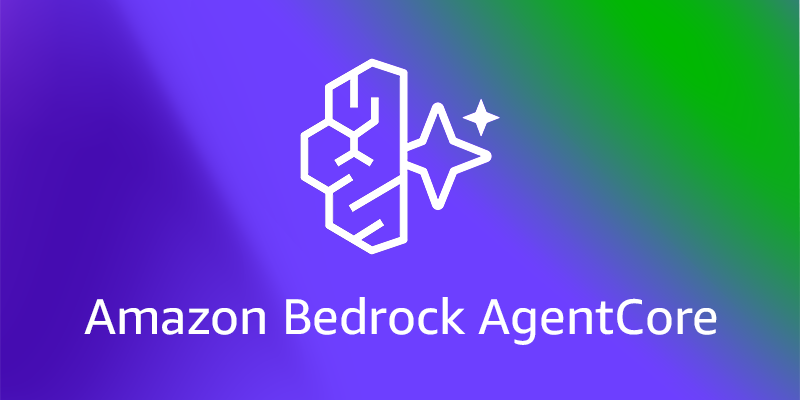
AWS Just Broke AI Agent Development - And Your IDE Will Never Be the Same
AWS open-sources MCP server for Bedrock AgentCore, enabling true IDE-native AI agent workflows that eliminate custom integration code
The era of wrestling with custom integration code for AI agents is officially over. AWS just dropped a bombshell by open-sourcing an MCP server for Amazon Bedrock AgentCore, and it’s about to fundamentally change how developers build, test, and deploy AI agents, directly from their IDEs.
What Just Happened?
AWS has open-sourced an MCP server for Amazon Bedrock AgentCore ↗ that enables IDE-native agent workflows across MCP clients via a simple mcp.json configuration and uvx installation. This isn’t just another tool release, it’s a paradigm shift that collapses the traditional development loop for AI agents.
The significance here is profound: developers can now refactor, deploy, and test agents directly from their editors using MCP clients like Cursor, Claude Code, Kiro, and Amazon Q Developer CLI. The days of writing bespoke glue code to connect your agent to external systems? Officially numbered.
The MCP Revolution You’ve Been Waiting For
The Model Context Protocol (MCP) is essentially the “USB-C port for AI”, an open-source standard that lets AI applications connect to external systems, data sources, and tools in a standardized way. Think of it as a universal adapter that eliminates the need for custom connectors between your AI agent and every API, database, or service it needs to interact with.
As ServiceNow’s documentation explains ↗, MCP provides “an open-source standard for connecting AI applications to external systems. Using MCP, AI applications like Claude or ChatGPT can connect to data sources, tools, and workflows, enabling them to access key information and perform tasks.”
What makes AWS’s move particularly strategic is that they’re embracing an open standard rather than creating yet another proprietary protocol. This means developers can build against MCP once and have their agents work across multiple platforms and tools.
The IDE-Native Agent Loop: No More Context Switching
The most immediate impact? Developers can now stay in their flow state. Instead of juggling between your IDE, terminal, cloud console, and testing environment, the entire agent development lifecycle happens where you’re already working.
Here’s what this looks like in practice:
- Refactor in-place: Modify your agent’s logic directly in your editor
- Deploy instantly: Push changes to AgentCore Runtime with IDE integration
- Test immediately: Run agent tests without leaving your development environment
- Iterate rapidly: See results and make adjustments in real-time
The AWS technical documentation ↗ highlights that the server runs directly on AgentCore Runtime with Gateway/Memory integration for end-to-end deploy→test workflows inside the editor.
This eliminates what developers have been calling “integration debt”, the cumulative cost of maintaining custom connectors between systems. With MCP, you build against a standard protocol rather than maintaining fragile point-to-point integrations.
Production-Grade Hosting Without the Headache
What separates this from previous attempts at agent development tooling is the production-ready infrastructure backing it. Agents and MCP servers run on AgentCore Runtime (serverless, managed) with documented build→deploy→invoke flows.
The built-in toolchain integration is particularly clever: AgentCore Gateway automatically converts APIs, Lambda functions, and services into MCP-compatible tools, while Memory provides managed short/long-term state for agents. This means your agent can maintain context across sessions without you having to build state management from scratch.
Security and IAM alignment are handled within the AgentCore stack, ensuring agent identity and access align with AWS credentials and policies. No more worrying about permission mismatches between your development environment and production.
Why This Changes Everything for Multi-Agent Systems
The implications extend far beyond single-agent development. As Octopus Deploy’s exploration of agentic AI with MCP ↗ demonstrates, MCP enables sophisticated multi-agent workflows where different agents can collaborate on complex tasks.
Imagine an agent that analyzes code changes, another that assesses risk, and a third that handles deployment, all coordinated through MCP servers. The protocol enables agents to discover each other’s capabilities and collaborate dynamically.
This is particularly powerful for enterprises where different teams might be building specialized agents. With MCP, these agents can interoperate without requiring centralized coordination or custom integration work.
The Developer Experience Upgrade You Didn’t Know You Needed
The setup process exemplifies the developer experience focus: one-click uvx install plus a standard mcp.json layout across clients dramatically lowers onboarding friction. Developers can go from zero to productive agent development in minutes rather than days.
This contrasts sharply with the current state of agent development, where teams often spend weeks building and maintaining integration layers between their AI models and the systems they need to interact with.
As one industry observer noted, the move toward standardized protocols like MCP represents a maturation of the AI agent ecosystem, from experimental prototypes to production-ready systems with proper governance, observability, and interoperability.
The Bigger Picture: AWS’s Agentic AI Strategy
This release isn’t happening in isolation. It’s part of AWS’s broader agentic AI strategy ↗ that includes Amazon Bedrock AgentCore, Strands Agents, and purpose-built agent infrastructure.
What’s particularly interesting is how AWS is positioning itself as the platform for agentic AI while embracing open standards. Rather than locking developers into proprietary tooling, they’re providing the infrastructure to run agents built against open protocols.
This approach acknowledges that the agent ecosystem will be diverse, different teams will prefer different frameworks, models, and tools. By supporting MCP, AWS ensures its platform remains relevant regardless of which specific agent technology gains traction.
What’s Next for Agent Development?
The immediate impact will be felt by teams building AI agents today, but the longer-term implications are even more significant. As MCP gains adoption, we’ll likely see:
- Standardized agent components: Reusable tools and capabilities that work across different agent frameworks
- Ecosystem growth: A marketplace of MCP-compatible services and tools
- Reduced vendor lock-in: Ability to move agents between platforms with minimal friction
- Accelerated innovation: More time spent on agent logic, less on integration plumbing
The growing momentum around MCP ↗ suggests this isn’t just an AWS initiative, it’s becoming the de facto standard for agent interoperability.
The Bottom Line for Developers
If you’re building AI agents, this changes your calculus significantly. The barrier to building production-ready agents just dropped, and the development experience improved dramatically. The question isn’t whether to adopt MCP, it’s how quickly you can integrate it into your workflow.
The era of wrestling with custom integration code is ending. The era of IDE-native, interoperable AI agents is here. And judging by AWS’s move, it’s arriving faster than anyone expected.



